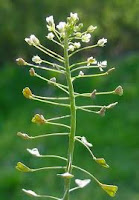JERUBEBA, SOLANUM PNAICULATUM
Jerubeba is a member of the Solanaceae or nightshade family of plants, making it a relative of the Nipplefruit, aubergines, Belladonna, tomatoes and potatoes as well as the spiny and woody nightshades. It is native to Brazil Paraguay Argentina
 Traditionally in
Traditionally in Other traditional uses recorded are to get rid of internal parasites and to reduce flatulence. It is supposed to be a diuretic, to help in respiratory problems and also to clear obstructions in the internal organs.
 Any herbal remedy should be used with care and only in consultation with a doctor. There are effects of Jerubeba which should be borne in mind. First of all the phytochemical solasodine contained in the plant and others in the nightshade family has been shown in some studies to reduce sperm count and have an anti-fertility effect in male animals. It also has been shown to lower blood pressure as well as to stimulate the heart. Herbalists in
Any herbal remedy should be used with care and only in consultation with a doctor. There are effects of Jerubeba which should be borne in mind. First of all the phytochemical solasodine contained in the plant and others in the nightshade family has been shown in some studies to reduce sperm count and have an anti-fertility effect in male animals. It also has been shown to lower blood pressure as well as to stimulate the heart. Herbalists in Dr. G. L. Cruz, in his book, "Livro Verde das Plantas Medicinais e Industriais do Brasil" (1965, Belo Horizonte
". . . the roots, leaves, and fruit are used as a tonic and decongestive. It stimulates the digestive functions and reduces the swelling of the liver and spleen. It is a good remedy against chronic hepatitis, intermittent fever, uterine tumors, and hydropsy."
 However these traditional uses have not been corroborated by research despite claims to the contrary.
However these traditional uses have not been corroborated by research despite claims to the contrary. Research does seem to show that the plant is a good treatment for stomach ulcers and gastric disorders, thus bearing out at least some of its traditional uses.
“…antiulcer activity of the plant extracts appears to be related directly to a potent anti-secretory activity. No toxic signs were observed following administration of different extracts up to 2 g/kg body wt., p.o. Collectively, the results validate folk use of Solanum paniculatum L. plant to treat gastric disorders.” S. Mesia Vela et al. 2002, “Solanum paniculatum L. (Jurubeba): Potent inhibitor of gastric secretion in mice” Phytomedicine Vol. 9 (6) pp.508-14.
These results were published from the same study in different journals in the same year
 “Our results indicate that neither S. paniculatum ethanolic leaf extract nor its ethanolic fruit extract exhibited mutagenic effect in mice bone marrow; however, at higher doses, both extracts presented cytotoxic activity.” Viera PM, Santos SC and Chen-Chen L. 2010, “Assessment of mutagenicity and cytotoxicity of Solanum paniculatum L. extracts using in vivo micronucleus test in mice” Brazilian Journal of Biology vol.7 (3).
“Our results indicate that neither S. paniculatum ethanolic leaf extract nor its ethanolic fruit extract exhibited mutagenic effect in mice bone marrow; however, at higher doses, both extracts presented cytotoxic activity.” Viera PM, Santos SC and Chen-Chen L. 2010, “Assessment of mutagenicity and cytotoxicity of Solanum paniculatum L. extracts using in vivo micronucleus test in mice” Brazilian Journal of Biology vol.7 (3). However the study also showed that the “leaf extract may have antimutagenic effects” but this was not conclusive. Viera P. M, Santos S. C and Chen-Chen L. 2010, “Solanum paniculatum L. leaf and fruit extracts: assessment of modulation of cytotoxicity and genotoxicity by micronucleus test in mice.” Journal of Medicinal Food Vol. 13 (6) 1424-30.
The jerubeba has also been found to have anti-viral effects on the herpes virus; Ydia M, Valadares et al, 2009 “Antiviral activity of Solanum paniculatum Extract and Constituents” in Z Naturforsch Vol. 64 pp 813-818. This study concluded that this plant is a “source of cytotoxic and antiviral compounds.”
 However most of the research has been carried out in
However most of the research has been carried out in 



















